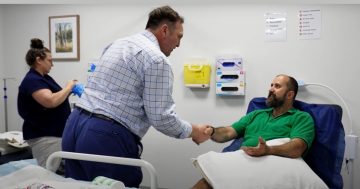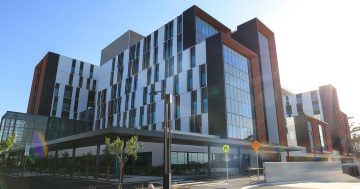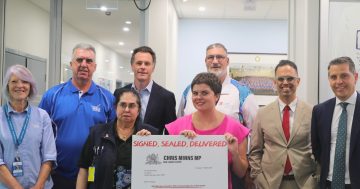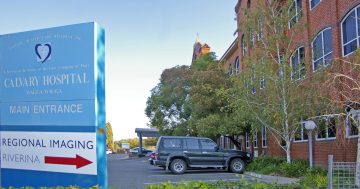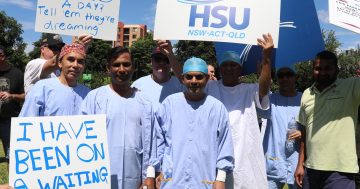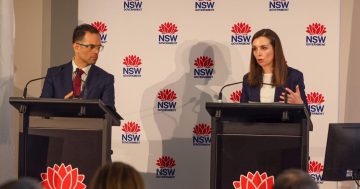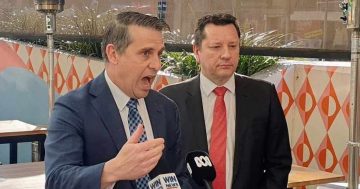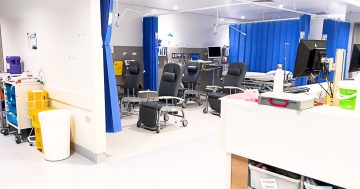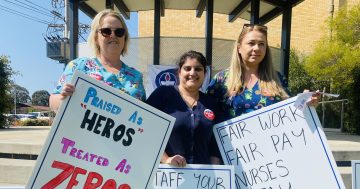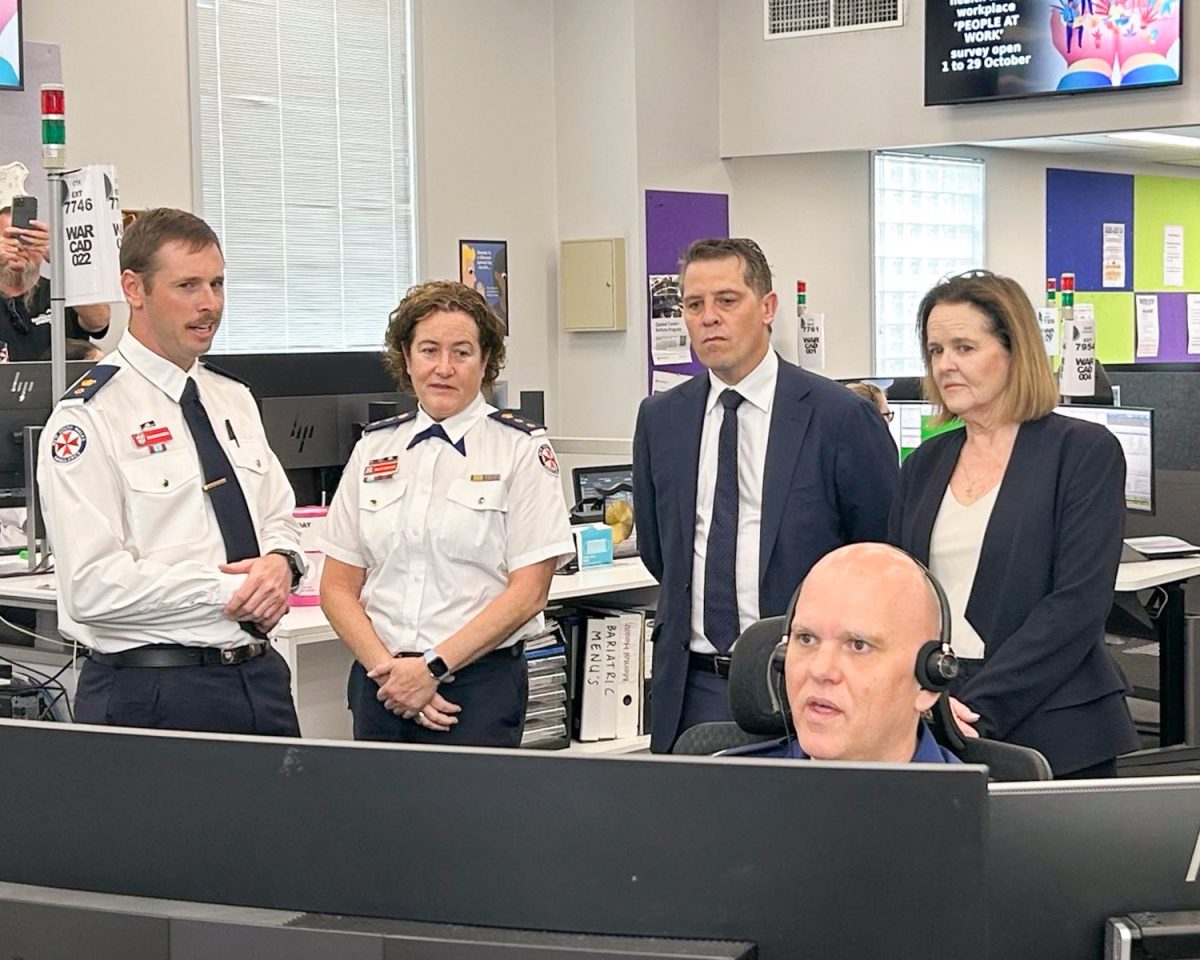
Minister Ryan Park and Anna Watson MP heard from emergency services union representatives about their ongoing challenges when they visited the NSW Ambulance Southern Control Centre earlier this month. Photo: Facebook.
The NSW Government made little progress in its recent meeting with the private health insurance sector, as it works to crack down on some providers’ alleged rorting of the public hospital system.
At the end of last month, Health Minister Ryan Park announced that some private health insurers have been skipping out on paying the correct rate for public hospital beds their members use.
“So many not-for-profit insurers have managed to do the right thing, including the health funds for police, nurses, navy and teachers,” he said. “But we’re seeing some of the largest for-profit insurers, who enjoy billions of dollars in profit each year, sticking taxpayers with the tab.”
NSW Health estimates the average cost of a hospital bed is $1075 per day. However last year the department charged private health insurers below this, at a rate of $892 per hospital bed, per day (17 per cent off).
Treasurer Daniel Mookhey said the current “unsustainable” arrangement meant public hospitals were heavily subsidising private health insurers, costing the state $140 million every year – for the past five years.
These negotiations come at a time when the latest Bureau of Health Information (BHI) Healthcare Quarterly Report found an alarming rise in ambulance demand. Ambulance responses have grown 7.8 per cent compared with the same quarter in 2023, while one in 10 patients who arrived at the ED by ambulance waited longer than 76 minutes for their care to be transferred to ED staff (which is the longest since BHI started reporting this measure).
Forty-four of the 53 private health insurers within the sector have agreed to or are currently paying the correct rate to public hospitals.
But the NSW Government has told media that some of the largest insurers have held out, costing the state an amount that could be used to employ another 1000 senior nurses, build a new rural hospital or reduce the elective surgery wait list by thousands of patients.
Former Liberal Treasurer Mike Baird urged the nation’s big four insurers (HCF, NIB, Bupa, Medibank) to pay the correct single room rate back in 2013. Together these insurers make up 74 per cent of the private health insurance market.
Mr Baird’s legislation, which failed to get up at the time, has been reintroduced by the current Labor State Government in its negotiations with these insurers over the past four months. While no alternative solutions were proposed at their last meeting on 17 October, the state confirmed all parties have agreed to continue dialogue towards a resolution.
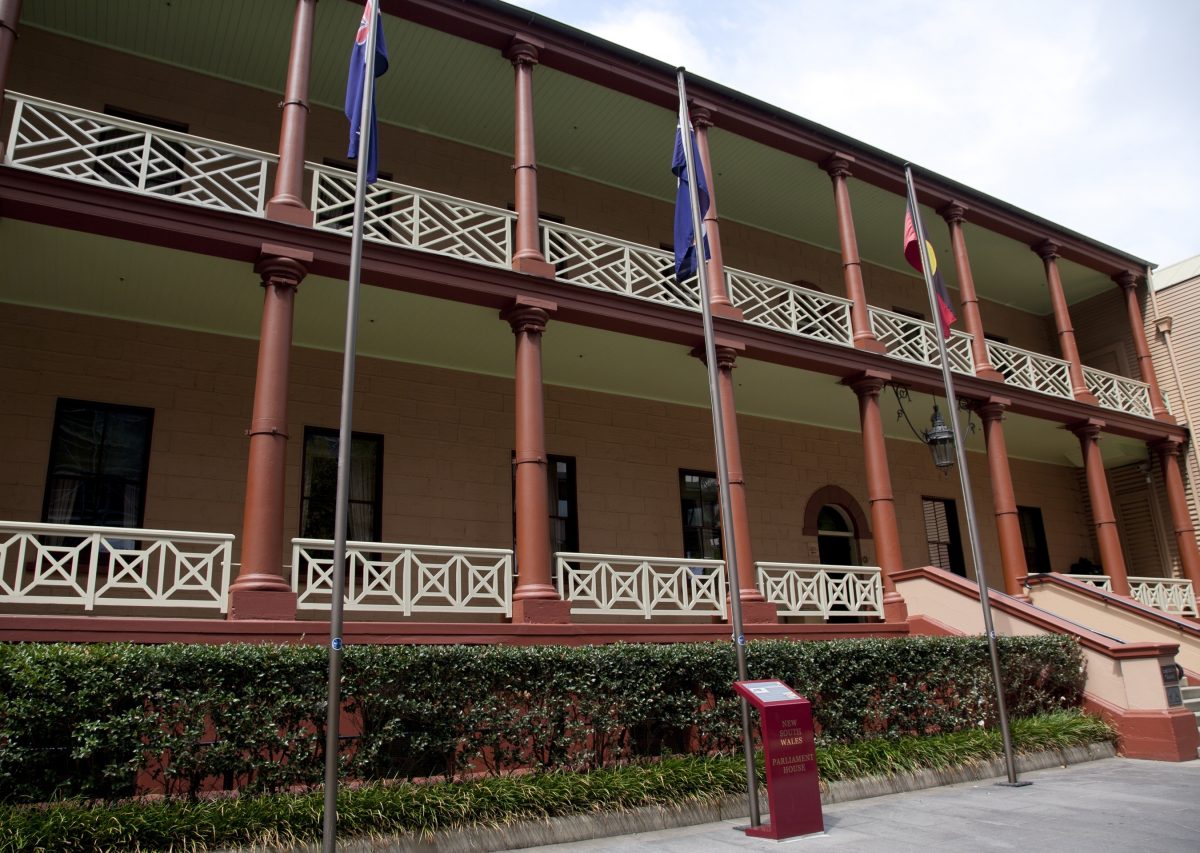
The NSW Government has met with representatives of the private health insurance sector more than 20 times since May, which is around once each week. Photo: Trigga.
The current arrangement with private insurers has existed in NSW for over 40 years. However in the past few years, there’s been a significant jump in profits afforded to those insurers still not paying the correct rates.
In 2022-23 the industry recorded a $2.2 billion profit (110 per cent rise on 2021-22), at the same time the proportion of premium values returned to customers were falling (88 per cent in 2019-20 to 82 per cent in 2022-23).
Last financial year when the single room rate was gazetted at $892:
- HCF was only paying $463, costing NSW Health $40.5 million per annum
- NIB was only paying $491, costing NSW Health $17.6 million per annum
- Bupa was only paying $501, costing NSW Health $35.8 million per annum
- And Medibank was only paying $515, costing NSW Health $33.4 million per annum.
As the NSW Government made its calls on private health insurers public, it also secured a ceasefire in its industrial negotiations with the state’s Nurses & Midwives’ Association.
Not long after thousands of union members gathered for their last action outside Parliament House, Health Minister Ryan Park confirmed on 30 September that the state and union had come to an agreement.
NMA acting general secretary Michael Whaites said the government had agreed to discussions on pay negotiations, including the possibility of a multi-year agreement.
While this “was not the final outcome” the union had sought, Mr Whaites said the NMA looked forward to “robust and productive discussions taking place with the State Government over the coming weeks”.


